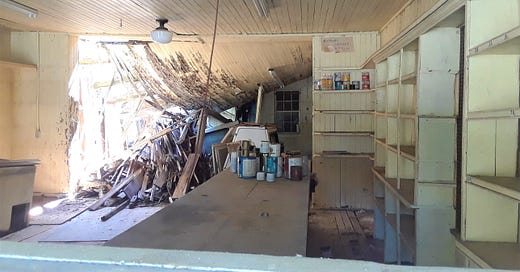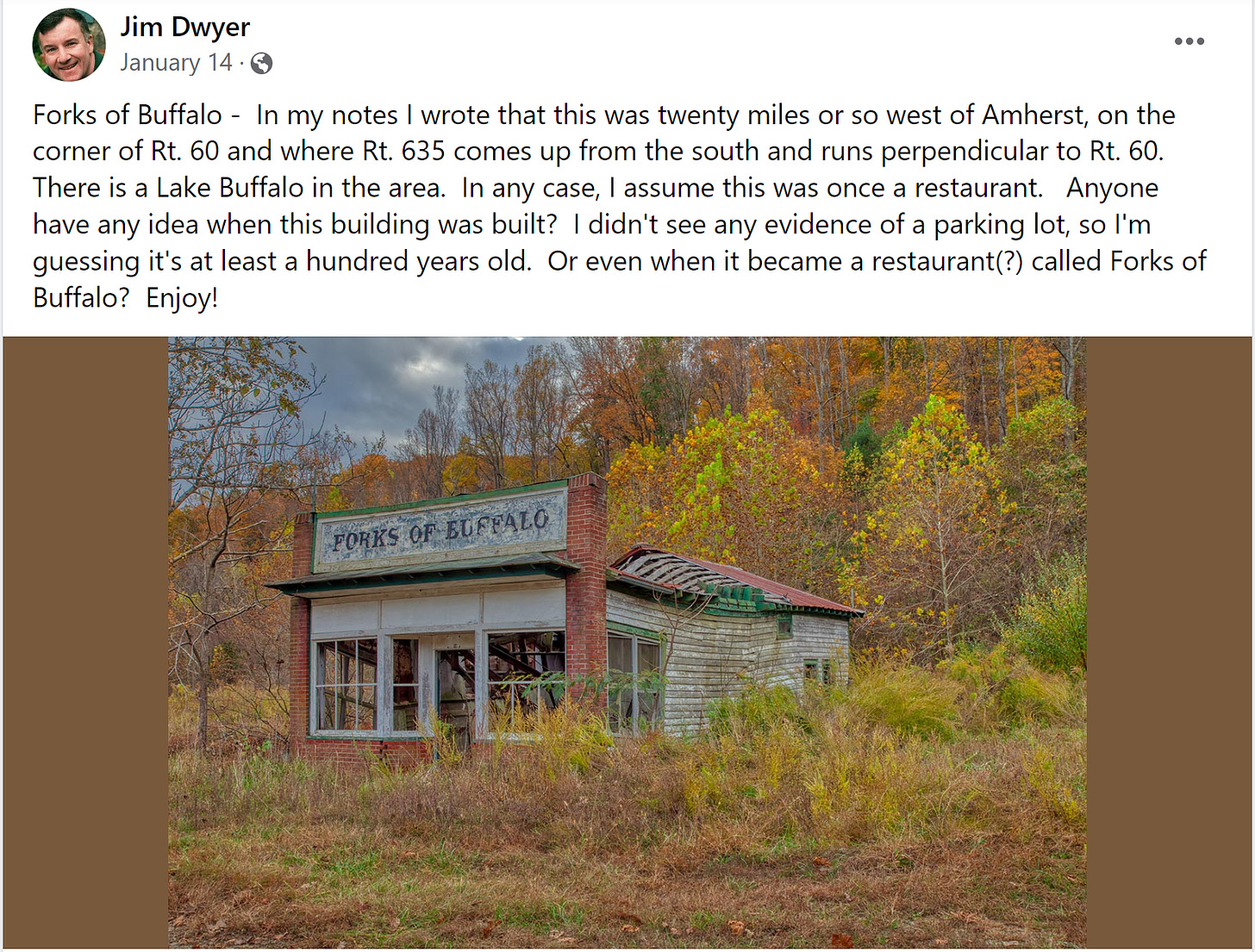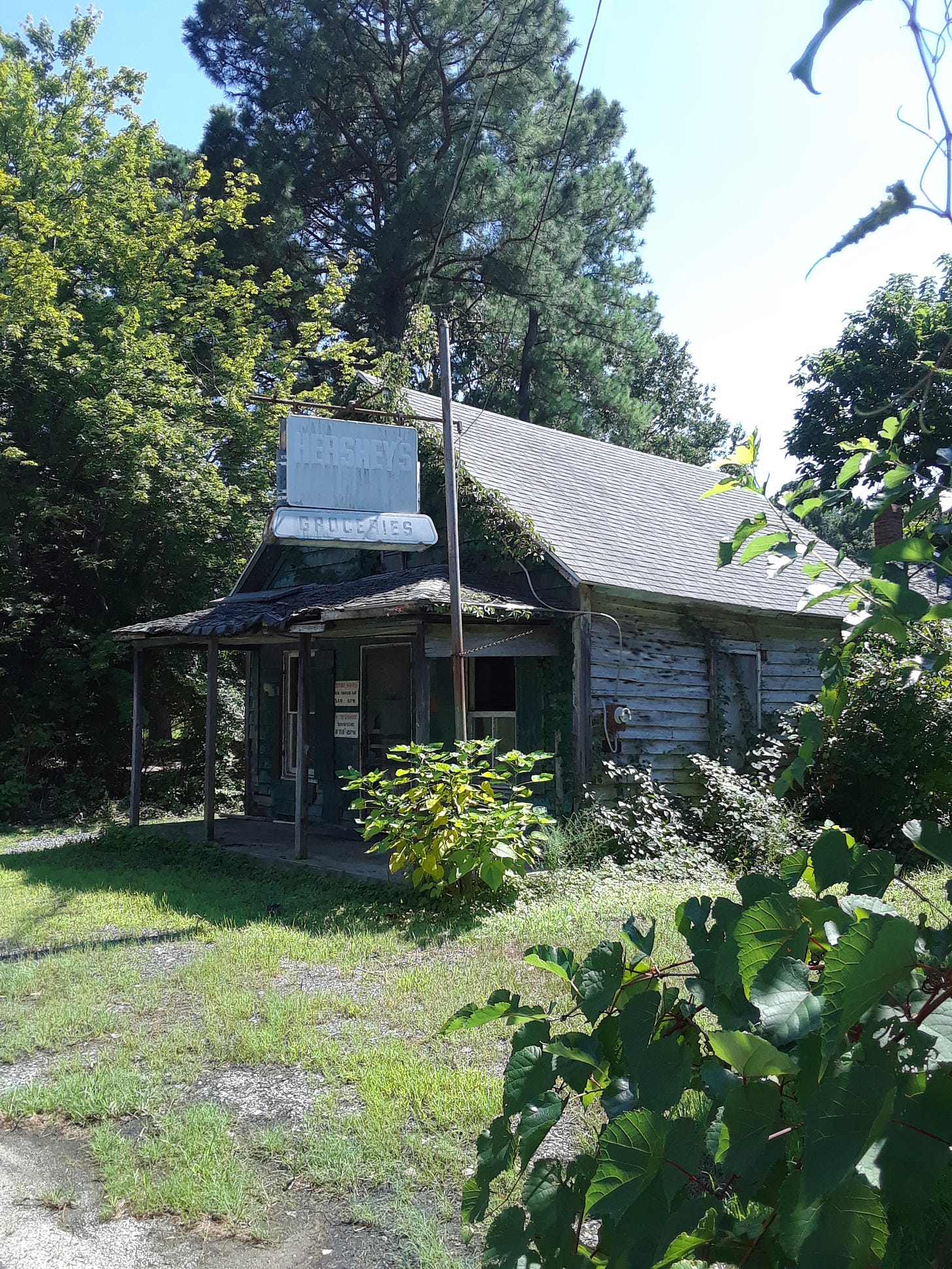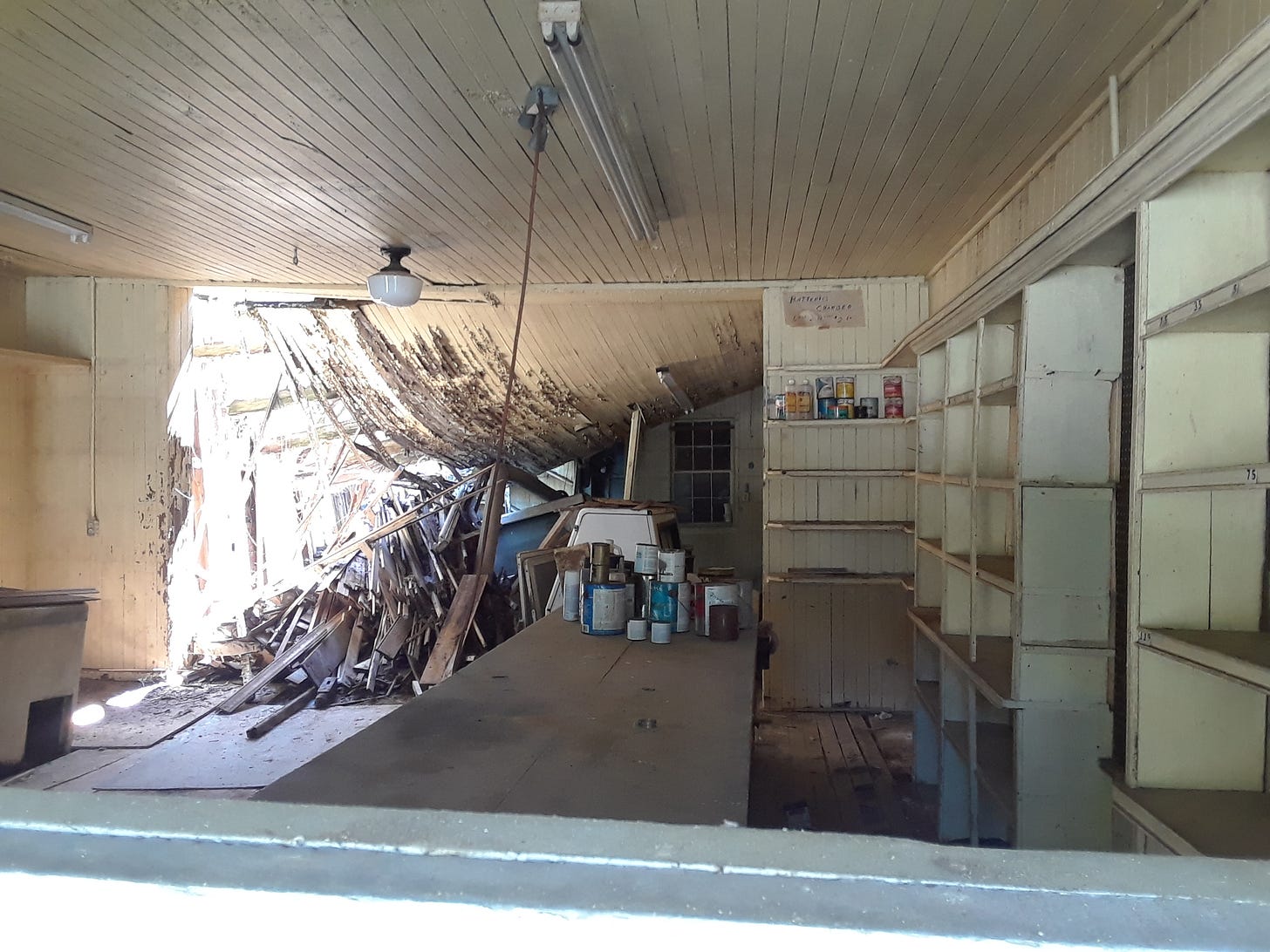This is what Google Maps returns if you type in “Forks of Buffalo, Virginia”:
And I typed that in because I saw this post on a Facebook group:
Here’s another screenshot from the same group:
This is an old country store, abandoned for decades. It was also once the community’s post office. There really isn’t much here—so many names on the map are just stretches of country road with a church or two, maybe a store, and a garage or warehouse. Some of these places were once more than that, but not all.
This one was. In this particular area, there was even once a hotel (more than one, actually!) with hot springs and lots of other amenities: the Buffalo Springs Resort. From the linked article: “Today, forest has reclaimed the area and little remains that would indicate that people came from throughout the region to visit Buffalo Springs.”
This was a century ago.
It’s always sort of eerie to realize—whether it’s the classically urban cities we destroyed under “urban renewal,” or remote areas that once had their own strong regional economies—that America has broken continuity with what we once were. And to a great extent we have lost even the memory of our old national self.
Someone in the Facebook group shared a photo of the store in the 1950s:
That’s fascinating and cool, but it’s also sad to see the contrast. The comments reveal that the store closed in the mid-1990s—not coincidentally the period when free trade and big-box retail were contentious political and social issues, and still not completely settled. In the early 2000s, the roof began to come apart. Today, the whole building, with the exception of the façade, has pretty much fallen in on itself.
I’ve driven past several of these over the years—old country stores, general stores, grocery stores—that have either been replaced by a Walmart or a modern gas station/convenience store or a dollar store some distance away, or by nothing. They’re incredibly simple structures, with shelving usually built into the walls.
Here’s one I photographed in 2018, out on the Maryland Eastern Shore:
And yet this Forks of Buffalo store, out on a lonely stretch of road, 10-15 miles from the nearest town, was given a stately façade. I’ve seen this too: buildings mostly intended for passing motorists, yet retaining their Main Street look. Roadside architecture, as a body of styles, had not arrived here yet.
There are still some functioning stores in the area which are not chains or “modern” stores. Ogden’s Grocery, a little store in a gas station/auto shop building; Sardis Grocery, which also serves biscuits and breakfast; and Davis Grocery, which sounds a bit more like an actual grocery store. Here’s one review of Davis from Google: “One of the few good old fashioned ‘country stores’ left in the area! They often have fresh cut steaks from the grass-fed beef cattle they raise on their own farm here. I go here all the time! Saves me a 25 mile trip to town.”
None of these places have Yelp reviews. None have photos in their Google reviews (of which they all have a few.) All of this, in a way, makes these places off-limits to me unless I actually go there. The internet has not captured these places and this life, and maybe the people like it that way.
What exactly is this? It’s not “urbanism.” I guess it’s what you might call “ruralism.” One of the reasons why genuine rural life and its habits are kind of unfamiliar to me is that the suburban penumbra around Washington, D.C. and Northern Virginia is so big. You have to drive a long ways before you reach the edge of the exurban area and the beginning of the countryside. It takes effort and deliberation to decide to go see what’s outside of the broad urbanized area.
The lonely, isolated, individualist notion of rural life—“I’ll move far away from the city so I can be left alone”—echoes a long tradition in America that’s often said to go back to Thomas Jefferson’s low view of cities. But it’s also quite modern: forgetting that rural life was once far more connected and communitarian than it is, or is perceived as being by suburbanites and urbanites, today.
I am not a rural American, and I have little experience of places that are truly outside the orbit of a major city. What passes for “rural” where I have lived is mostly exurban, or the remains of agricultural landscapes preserved through open space or farmland preservation programs. New Jersey, where I’m from originally, is the most densely populated state in the nation.
But Virginia, by contrast, houses roughly half its people in the metro areas around Washington, D.C., Richmond, and the Hampton Roads area. The other rough half is spread over the huge remaining geography. Some of it is fuller and more alive than you might think. But a lot is like this lonely store—and was, and could be, more.
Related Reading:
Thank you for reading! Please consider upgrading to a paid subscription to help support this newsletter. You’ll get a weekly subscribers-only post, plus full access to the archive: over 500 posts and growing. And you’ll help ensure more material like this!










You made me think of my grandparents' old store in Honey Grove, Pennsylvania. It was a small-town general store, attached to their house. I don't know how long it operated, but I think for close to a century--it closed in 1970. It was a century of community life in its day; my mom remembers the "loafers" hanging out on the front porch. Today, the building is still there and still attached to the house, but with a different owner who hasn't kept the place up. The building is in worse shape today than the street view below suggests, and you'd never know it was a store. The town itself, such as it is, is little more than a rural crossroads.
My site: http://jackspapers.adampages.com/retail-artifacts/
My submission to Shorpy: https://www.shorpy.com/node/19615
Street view from 2014: https://www.google.com/maps/@40.4023173,-77.5525935,3a,75y,323.2h,87.53t/data=!3m8!1e1!3m6!1sqpl-vkAbheWfalJOKjQDPQ!2e0!5s20140701T000000!6shttps:%2F%2Fstreetviewpixels-pa.googleapis.com%2Fv1%2Fthumbnail%3Fpanoid%3Dqpl-vkAbheWfalJOKjQDPQ%26cb_client%3Dmaps_sv.tactile.gps%26w%3D203%26h%3D100%26yaw%3D231.38077%26pitch%3D0%26thumbfov%3D100!7i13312!8i6656
It occurs to me in reading this is how these places have been affected by shifts in regional tourism. A hot springs and a hotel were often a draw for folks in a 50-100 mile radius. Now our tourism dollars and time are often spent in consolidated, corporate places: Disney World, Las Vegas, etc. and local/regional tourism is much smaller.